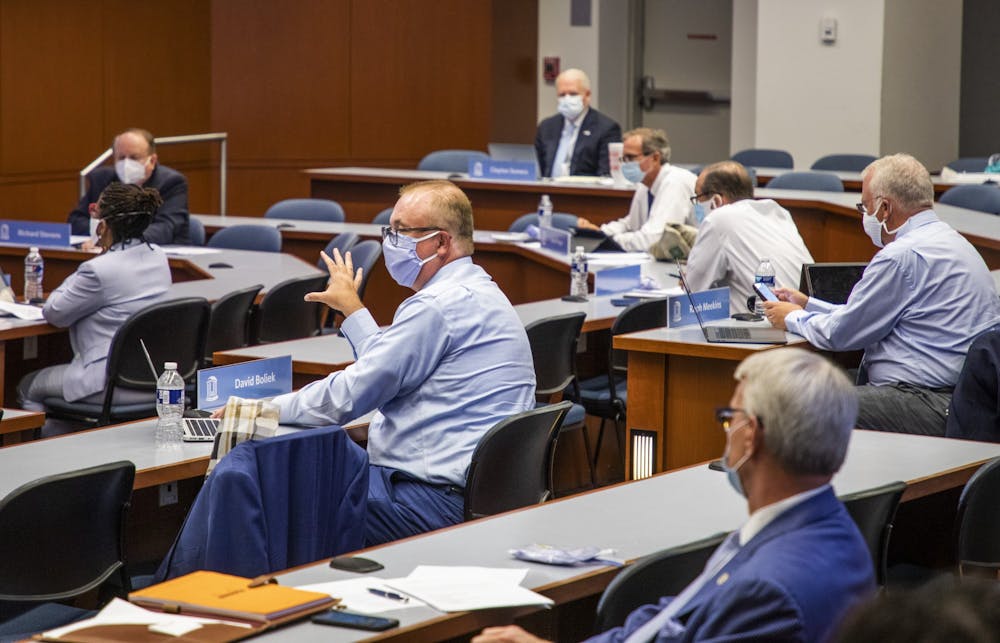There is now an official policy regarding the removal of the names of buildings on UNC's campus, after a 12-1 vote during Thursday's Board of Trustees meeting.
The policy comes after the BOT rescinded its self-imposed moratorium on renaming buildings in June. The moratorium was put into place in 2015, when Saunders Hall — named for former Ku Klux Klan leader and UNC graduate William L. Saunders — was renamed Carolina Hall.
The BOT gathered Thursday morning in Kerr Hall, in UNC's Eshelman School of Pharmacy, with in-person members wearing masks and distancing, and some members and UNC administrators joining virtually. At the meeting, Vice Chairperson Gene Davis read from the policy and said part of upholding UNC's values includes a willingness to change or otherwise contextualize names on campus buildings or spaces.
"In order to be a place where inclusive transformation is valued, we must be willing to submit our history and traditions to scrutiny and thoughtful assessment, consistent with the high standards of integrity and free and open inquiry and debate," Davis read from the policy.
At its meeting last week, the Commission on History, Race and a Way Forward identified four buildings — Aycock Residence Hall, Josephus Daniels Student Stores, Carr Building and Ruffin Residence Hall — and recommended the chancellor remove the names of Charles B. Aycock, Josephus Daniels, Julian S. Carr and Thomas Ruffin and Thomas Ruffin Jr. Charles Aycock and Josephus Daniels were both leaders and contributors to white supremacy campaigns, including the 1898 Wilmington Massacre; Julian Carr was a member of the KKK and spoke at the dedication of Silent Sam about whipping a Black woman; and the elder Thomas Ruffin was a former trustee from 1813 to 1870 and one of the largest slaveowners in North Carolina.
A group of students in History/American Studies 671: Introduction to Public History, taught by professor Anne Mitchell Whisnant has identified 25 different buildings on campus, including the four suggested by the commission, that are named after slaveowners or people involved in white supremacy.
Though the BOT did not make any decisions to remove names at its Thursday meeting, the new policy will require someone looking to change a name of a building or public place to submit a written proposal to the chancellor, which includes:
- The specific conduct by the namesake that puts in jeopardy UNC's integrity, mission or values
- The character of the namesake and scope of the harm to the University by continuing to honor this person
- The sources and strength of evidence that supports the allegations
The allegations need to be based on scholarly historical evidence and will be evaluated on several different principles that will make the case stronger or weaker.



